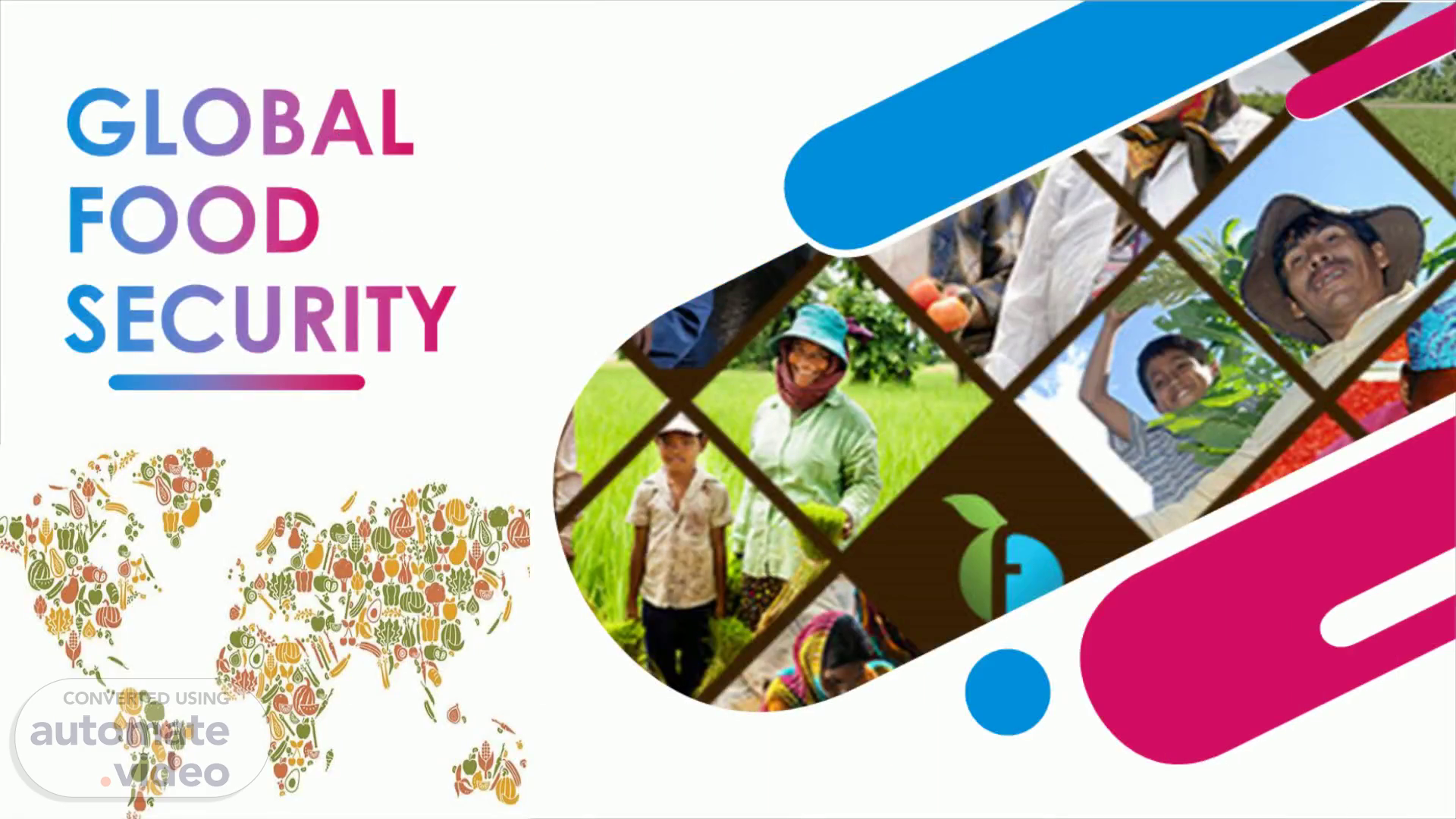
GLOBAL FOOD SECURITY
Scene 1 (0s)
GLOBAL FOOD SECURITY. oeij.
Scene 2 (7s)
WHAT IS GLOBAL FOOD SECURITY ?. 2. Food security, as defined by the United Nations’ Committee on World Food Security, means that all people, at all times, have physical, social, and economic access to sufficient, safe, and nutritious food that meets their food preferences and dietary needs for an active and healthy life. GLOBAL FOOD SECURITY is another issue related to the sustainability of the world’s current economic system. Food is the basic requirement for human survival. It helps to enhance the productivity and consecutively the production of food. It can assist in providing opportunities for income generation. And, it generally provides improvement of nutritional advice through home economics programmes and enhances the quality of rural life by way of community development..
Scene 3 (41s)
3. Food Availability Having sufficient quantity of appropriate food available. Accessibility Physical and economic access to food Stability Weather variability, seasonality It includes: domestic production, import capacity, food stocks, food aid. Purchasing power, income of population, transport and market infrastructure · Price fluctuations · Political factors · Economic factor.
Scene 4 (1m 2s)
Factors affecting Food Security:. Low per capita income Low and unequal distribution of income Poor and highly unstable growth performance especially in agriculture Unemployment and underemployment Low and declining farm size Poverty Climate induced insecurity: climate change , deforestation, landslide, declining soil fertility.
Scene 5 (1m 18s)
Food Security Affecting Urbanization. The food security is also having an influence in urbanization as:.
Scene 6 (1m 50s)
6. Chronically Hungry 768 million people were chronically hungry in 2020. 1000M 811 750M 500M 2006 Number of people whose habitual food consumption is insufficient to maintain a normal, active and healthy life. Hunger has been on the rise since 2015. 2008 637 2010 615 2012 2014 2016 2018 768 650 2020 Source: WFP.
Scene 7 (2m 3s)
7. As the pandemic roils economies and strains public health systems, the impact is most prominent in vulnerable countries, where fears of a “ hunger pandemic ” are growing. More than half of those with acute food insecurity are in Africa, where conflict, weather events, and pest invasions have already taken a toll. In South Sudan and Yemen, more than half the people were in a food security crisis or worse as defined by the Integrated Food Security Phase Classification/Cadre Harmonisé ( IPC/CH ). A Phase 3 food security crisis, on the IPC/CH scale, means households suffer serious malnutrition or can meet basic food needs only by depleting essential assets, which in turn requires urgent humanitarian action. Worse yet are an emergency and catastrophe/famine, Phases 4 and 5 on the scale, respectively..
Scene 8 (2m 38s)
Global stocks of most staple grains remain adequate, but the pandemic has disrupted food systems already under strain. The United Nations predicts new threats to food security as a result of collapse in demand for internationally produced agri -food products, sellers’ and buyers’ lack of access to small-scale local food markets, and loss of income from remittances and other sources..
Scene 9 (3m 18s)
[Audio] Ang agrikultura ang may pinakamalaking role sa usaping food security sapagkat dito sa agrikultura mas nasesecure natin ang mga raw material kung ito ba ay magandang klase at madaming sustansya ba ang ating makukuha. Kung hindi maganda ang pamamalakad ng isang agrikultura sa isang bansa tiyak na magugutom lang ang mga mamamayanan nito..
Scene 10 (3m 56s)
[Audio] Dito sinasabi kung pano ba mag kakaron ng innovation when it comes in food. For example like the GMO or genetic modified oraganism may mga scientist na mas iniimprove nila ang mga dna ng isang pagkain.
Scene 11 (4m 40s)
[Audio] Dito daw Malaki din ang tulong ng technology sa pag secure ng ating mga pananim pati narin ang ating kakainin. Mas napapadali ng mga teknolohiya ang pag haharvest at mas naproprotektahan ito sa mga natural disaster. Tulad ng bagyo na kung saan isa ang pilipinas ang laging natatamaan nito..